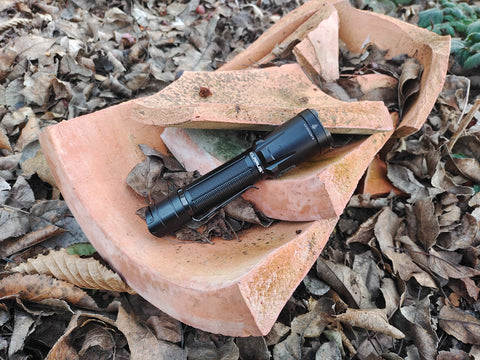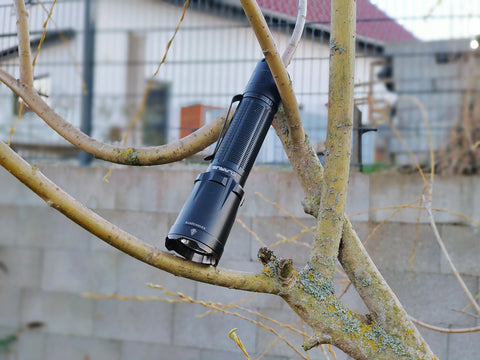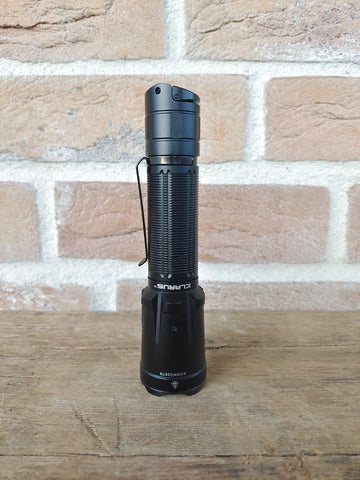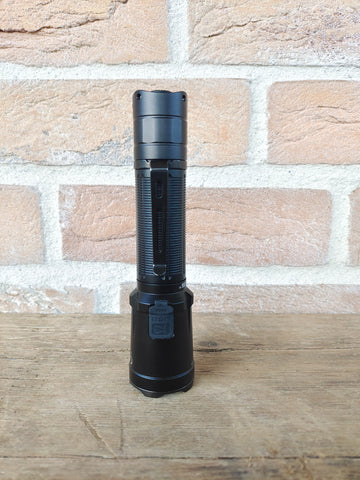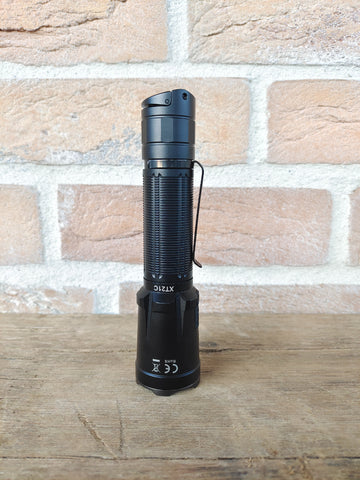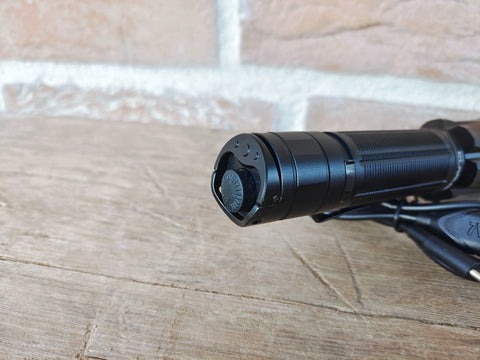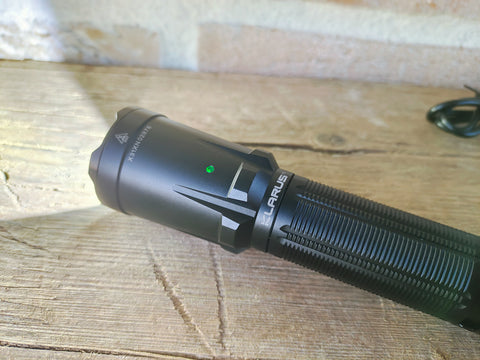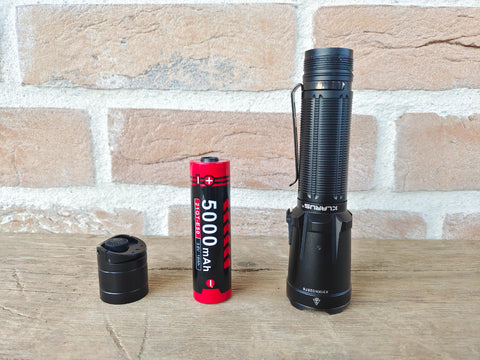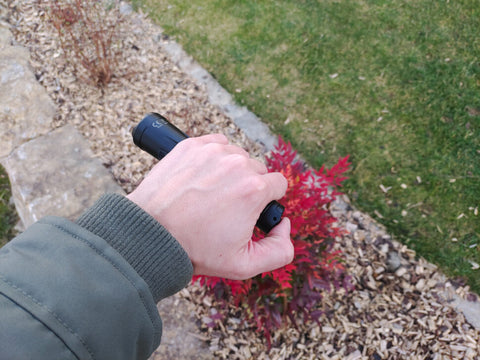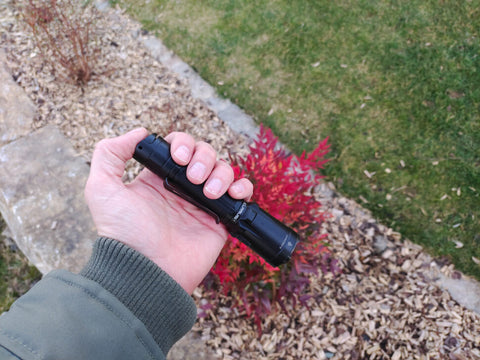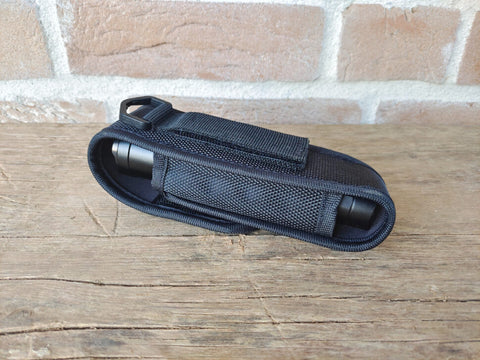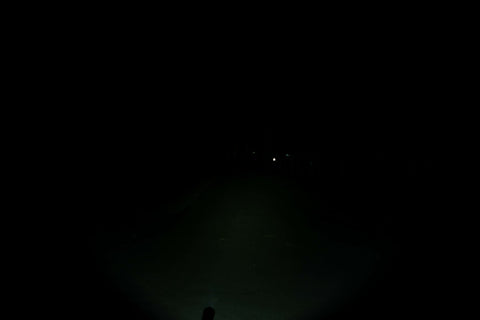KLARUS Klarus XT21C flashlight in test
Website: CHINAHANDYS.NET
Links:https://bit.ly/3yY4hM0
We already had two tactical flashlights from KLARUS in the test with the XT11GT Pro and the XT2CR Pro, which could quite convince me. Now, with the KLARUS XT21C, another tactical flashlight is ready for testing and I also took a closer look at this model. Whether it can confirm the positive impressions of the other models or even surpasses them, you can find out in this review.
Specifications
KLARUS also relies on a uniform basic design, at least for tactical flashlights, and thus the KLARUS XT21C already looks somehow familiar at first glance. It resembles the XT11GT Pro quite strongly and except for the lamp head, there are also clear similarities with the XT2CR Pro. However, I do not want to evaluate this negatively, because of course a brand should also be known by a "typical design". The XT21C is advertised as a "compact powerful tactical flashlight" and with an overall length of 14.6 cm and a weight of 187 grams including battery, it is even above the values of the KLARUS lamps I have already tested. So it is not particularly compact - but that does not bother at all for a tactical lamp. In my opinion, however, the "compact" in the advertising slogan could have been saved. The lamp basically consists of two parts: the lamp head with battery tube and the end cap with tail switch.
The lamp head measures 13 cm including thread and has a diameter of 3.5 cm at the very front of the head and a diameter of 2.5 cm in the handle area. The head has a notched bezel, which in the sense of a tactical flashlight, can also be used for self-defense or for example to break glass. In the head itself sits a Luminus SST70 LED, which emits through a fairly deep "Orange Peel" reflector (roughened inside). I personally like the Luminus LEDs quite a bit, so I was pleased to see that this model is equipped with them. On the outside, there is another status LED in the area of the cone-shaped head, as well as the USB-C charging port. As usual, the port is protected against external influences with a silicone plug. The plug is integrated flush into the casing and can still be opened easily - KLARUS has solved this very nicely. Directly below the actual head is the approximately 6 cm long handle area. This has the "KLARUS -typical" knurling which gives it a good slip resistance. At the end of the handle area is then the mount for the pocket clip. This can be rotated freely by 360° and sits pleasantly tight on the housing. The thread to the end cap is sealed with an O-ring and sufficiently lubricated in my test device.
The end cap of the XT21C is 3 cm long and has a diameter of 2.6 cm. On its back you will find the already known double switch from KLARUS . This was always further developed over the years and is now in the 5th generation. The XT11GT Pro and the XT2CR Pro also have this rear switch combination. It consists of a round main switch with silicone cap and an additional semi-circular rocker switch. Both switches work great and result in many very practical operating options. However, the XT21C is also a tactical light and will/can therefore come into contact with dust, dirt and other particles. As soon as, for example, some sand collects underneath the rocker switch, it can come to the fact that this can no longer be operated properly. So you should always make sure that the switch side of the lamp does not necessarily get directly into the dirt when using it in rough terrain. Basically, the XT21C is waterproof according to IPX8 and can withstand falls from up to one meter.
View of the Luminus LED Tail switch
Status LED in operation Lamp head, battery & end cap
The build quality of the XT21C is once again without a flaw. The anodization is very nicely done and has no flaws. Sharp edges with non-deburred areas are fortunately looked for in vain on this lamp. The XT21C can therefore absolutely confirm the previously collected impressions of KLARUS regarding the quality of workmanship - there is simply nothing to complain about here.
Scope of delivery of the KLARUS XT21C
The scope of delivery of the KLARUS XT21C includes:
- KLARUS XT21C flashlight
- 1 x 21700 Li-Ion battery
- 1 x holster
- 1 x USB-A to USB-C charging cable
- 1 x O-ring 1 x wrist strap
- 1 x user manual (multilingual incl. German)
User Interface
The XT21C is operated via the double switch at the rear of the lamp. This makes perfect sense for a tactical lamp, because a tail switch is usually found in a few seconds even in total darkness. In addition, the lamp fits quite well in the hand due to its size and can be operated well with the thumb in the "fist grip".
|
Zustand |
Aktion |
Resultat |
|
State |
Action |
Result |
|
Off (TS/OS) |
1 x Click & Hold (RS) for 5 seconds + then 1x Click (MS) |
Switch between Tactical Settings (TS) and Outdoor Settings (OS) |
|
Off (OS/TS) |
1 x Click (MS) |
Lamp on - High |
|
Off (OS/TS) |
1 x Tap & Hold (MS) |
Lamp on - Momentary High |
|
On (OS/TS) |
1 x Click (MS) |
Lamp off |
|
Off (OS) |
1 x Click & Hold (RS) |
Lamp on - Momentary Moonlight Mode (> 1 sec. fixes this mode) |
|
On (OS) |
1 x Click (RS) |
Change of light levels (Moon - Low - Med - High) |
|
On (OS) |
1 x Click & Hold (RS)(3 sec.) |
SOS Mode |
|
Off (TS) |
1 x Click & Hold (RS) |
Lamp on - Momentary Strobe Mode (> 2 sec. fixes this mode) |
|
On (TS) |
1 x Click (RS) |
Change of light levels (High - Med - Low - Moon) |
|
On (TS) |
1 x Click & Hold (RS)(2 sec.) |
Strobe Mode |
MS = Main switch; RS = Rocker switch
Similar to other KLARUS models in my tests, the user interface has two basic settings: the Tactical Setting and the Outdoor Setting. It is quite easy to switch between these settings (see table). The differences between the settings are the direct access when pressing the rocker switch and the change between the light levels. The Tactical Settings provide direct access to the Strobe Mode as well as a step ramping from High to Moonlight, while in the Outdoor Settings the Moonlight Mode can be controlled directly and the step change works ascending from Moon to High. I have shown the control of the XT21C in the table for you. This may seem a bit complicated at first, but once you have the lamp in your hand, you realize that the operation is actually very simple and was solved very well via the two switches. The XT21C has no electronic lockout, so you must simply turn the end cap one turn to prevent the unintentional switching on of the lamp during transport (manual lockout).
Die Status-LED am Lampenkopf zeigt im Betrieb auch die Kapazität des Akkus wie folgt an:
- l green = 70 - 100 %
- l orange = 30 - 69 %
- l red = < 30 %
- l red flashing = < 10 %
Overall, the user interface of the KLARUS XT21C is nothing really new if you already own lamps from KLARUS. However, this may also be considered quite positive, because so you find yourself as a customer of the company again and again quickly get along with newer models. The two rear switches were skillfully used to enable two different user settings and also the important direct accesses can be easily controlled.
Performance of KLARUS XT21C
To show the performance of the KLARUS XT21C, I have of course made beamshots for you. As always, all pictures were taken in one session and with identical exposure settings. The color temperature of the lamp is rather cold-white 6,500 Kelvin.
The display of the Moonlight Mode with its 5 lumens is unfortunately not possible in a meaningful way on the photos without displaying the High Mode clearly too bright at the same exposure settings. The Moonlight Mode is available for 240 hours thanks to the rather large battery. In Low Mode, 100 lumens are available for a maximum of 20 hours. This mode is sufficient for orientation in direct surroundings.
KLARUS XT21C – Moonlight – 5 Lumen
KLARUS XT21C – Moonlight – 5 Lumen
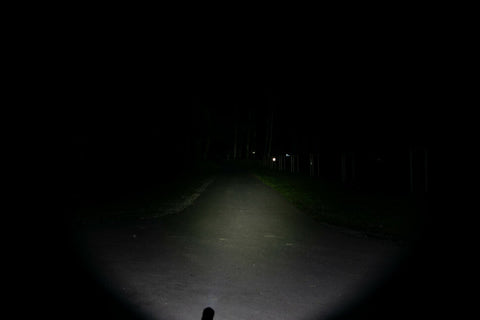
KLARUS XT21C – Med – 400 Lumen
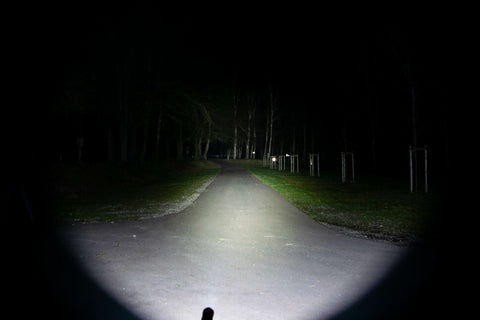
KLARUS XT21C – High – 3.200 Lumen
The Med Mode is already pleasantly bright with 400 lumens and is easily enough for a nightly walk. It is even available for a total of seven hours. The whole thing is topped by the High Mode with a maximum of 3200 lumens. However, these are only available for about 3 minutes before the lamp dims down to 800 lumens. These are then available for another 4 hours. With the 3,200 lumens, the XT21C then also has a maximum range of 324 meters, which is already a pretty decent value. The light levels of the KLARUS XT21C are quite clear compared to lamps from other manufacturers, but that's what makes this lamp really good. We have a moonlight mode that could be quietly a little shallower but in outdoor use definitely has its justification, if you just do not want to create a big stir. With the Med or the High Mode after the downregulation, the XT21C then covers in my opinion a very wide range of applications and holds with the maximum 3,200 lumens at any time still the necessary extra power ready when it may be extremely bright. I find the choice of light levels here very successful.
Battery
The KLARUS XT21C uses a 21700 Li-Ion battery with 5,000 mAh. The cell is 7.7 cm long and has a special double pole with plus & minus on one side. Unfortunately, this is also a real point of criticism for this flashlight. While the KLARUS models I tested so far could be operated with standard batteries, this model now unfortunately uses a special battery. You can only get a replacement for it (almost) from the manufacturer.
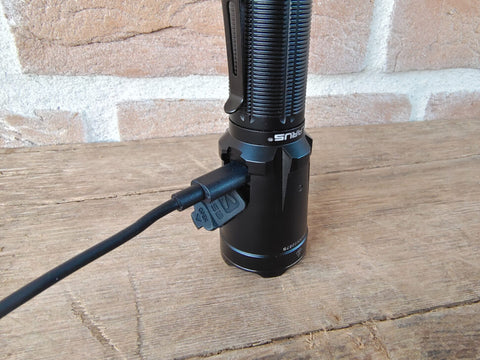
The battery is charged directly in the lamp. All you have to do is remove the silicone plug from the USB-C charging port, plug in the included charging cable and connect it to a charging adapter. During the charging process, the lamp can even be used in low mode. The status LED lights up red as soon as the charging process starts and green when the battery is finally fully charged. Charging is done with 2A and thus the 21700 cell is fully charged in about 3.5 hours.
Jens M.


